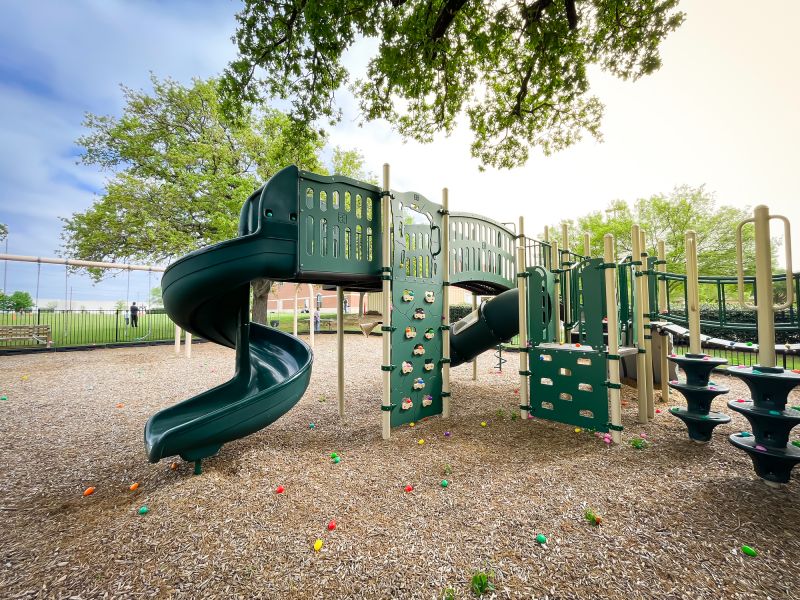Top-Rated Playground Mulches for Enhancing Outdoor Play Environments
Identify the most popular mulch options that combine safety, durability, and visual appeal for vibrant playgrounds.
 Choosing the right products for playground mulches is essential for creating a safe and enjoyable play environment. Playground mulch products come in various forms, each designed to serve specific safety, aesthetic, and maintenance needs. From loose-fill options to rubberized mats, the variety ensures that there are suitable solutions for different playground sizes, budgets, and user preferences. Proper selection can help cushion falls, reduce maintenance efforts, and enhance the overall look of the play area.
Choosing the right products for playground mulches is essential for creating a safe and enjoyable play environment. Playground mulch products come in various forms, each designed to serve specific safety, aesthetic, and maintenance needs. From loose-fill options to rubberized mats, the variety ensures that there are suitable solutions for different playground sizes, budgets, and user preferences. Proper selection can help cushion falls, reduce maintenance efforts, and enhance the overall look of the play area.
Top Overall Option
Rubber Playground Mulch
Rubber playground mulch is a versatile and durable option that provides excellent impact absorption and low maintenance. It is available in loose-fill granules or interlocking tiles, making it suitable for various playground settings. Rubber mulch helps create a consistent, cushioned surface that can reduce injury risk while maintaining a clean appearance. Its resilience makes it a popular choice for playgrounds with high foot traffic and diverse age groups.
Types of Products For Playground Mulches
Wood Chips and Bark
Natural wood chips and bark are common loose-fill options that provide a soft surface and natural aesthetic. They require regular replenishment to maintain safety levels.
Rubber Granules
Small rubber pieces that offer good impact absorption and are often used in loose-fill or poured-in-place systems.
Poured-in-Place Rubber
A seamless rubber surface that is poured directly onto the ground, creating a smooth, cushioned area with minimal displacement.
Interlocking Rubber Tiles
Pre-fabricated tiles that lock together to form a stable, impact-absorbing surface suitable for various playground designs.
Engineered Wood Fiber
A processed wood fiber material designed for impact absorption, often used in public parks and school playgrounds.
Artificial Turf with Cushioning
Synthetic grass with embedded shock-absorbing pads, providing a soft surface that mimics natural grass.
Foam Mats
Interlocking foam tiles that offer a cushioned surface, easy to install and replace.
Sand
Traditional loose-fill material that provides cushioning but requires regular maintenance to keep clean and safe.
Pea Gravel
Small, rounded stones that offer impact absorption but may require regular leveling and maintenance.
Artificial Rubber Mulch
Recycled rubber pieces designed specifically as a playground surface, offering durability and impact absorption.
Popular Choices
A widely used impact-absorbing material available in various forms to suit different playground needs.
A traditional loose-fill option offering natural appearance and cushioning, suitable for many outdoor settings.
Pre-made tiles that are easy to install and provide a stable, impact-absorbing surface.
Seamless rubber surface that offers continuous impact absorption with minimal displacement.
Impact-absorbing wood fiber material often used in school and park playgrounds.
Synthetic grass combined with cushioning layers for a soft, playable surface.
Interlocking foam tiles that are lightweight and easy to maintain, suitable for smaller or indoor playgrounds.
A classic loose-fill material that provides natural cushioning but requires regular upkeep.
Small rounded stones used as impact-absorbing surface material, popular in some outdoor settings.
Made from recycled rubber, this mulch offers durability and impact absorption for playground surfaces.
When selecting playground mulches, considerations such as impact absorption, durability, ease of installation, and maintenance requirements are important. Loose-fill materials like wood chips or rubber granules are popular for their shock-absorbing qualities, while interlocking tiles and mats provide a more stable surface that minimizes displacement over time. The choice of material can influence the safety level, longevity, and overall appearance of the playground space.
Maintenance and safety standards should guide product selection. Regular inspection and replenishment of loose-fill mulches are necessary to maintain optimal impact absorption, whereas solid mats and tiles typically require less ongoing maintenance. The installation process varies, with some products offering straightforward DIY options, while others may require professional setup. Considering the specific needs of the playground, including age groups and foot traffic, helps in choosing the most appropriate mulch product.
Ultimately, investing in high-quality, suitable playground mulch products can contribute significantly to a safer play environment. Properly selected materials not only protect children during play but also help keep the area clean and visually appealing. By understanding the different types available and their respective benefits, caregivers and facility managers can make informed decisions that enhance safety and enjoyment for all users.
Key Buying Considerations
- Impact absorption capacity to reduce injury risk during falls
- Material durability and resistance to weathering
- Ease of installation and whether professional help is needed
- Maintenance requirements for cleaning and replenishing materials
- Compatibility with existing playground surfaces or structures
- Safety standards and certifications relevant to playground surfaces
- Drainage properties to prevent water accumulation
- Aesthetic appeal and color options
- Cost and long-term value, including replacement frequency
- Environmental factors such as mold or pest resistance
- Accessibility features for children with mobility challenges
- Size and shape options to fit different playground layouts
- Slip resistance to prevent accidents
- Environmental impact of the material used
